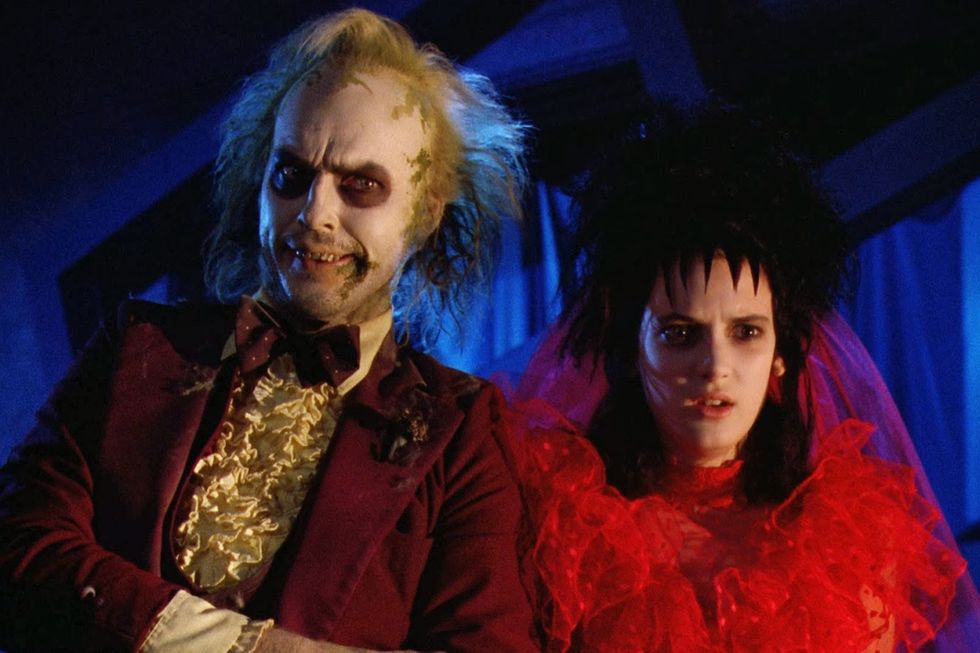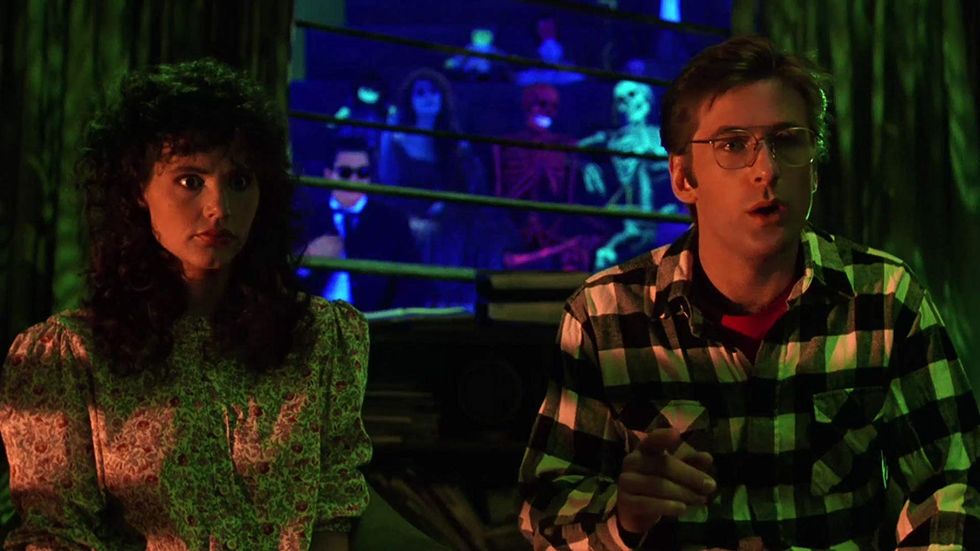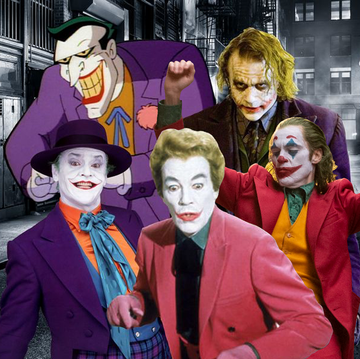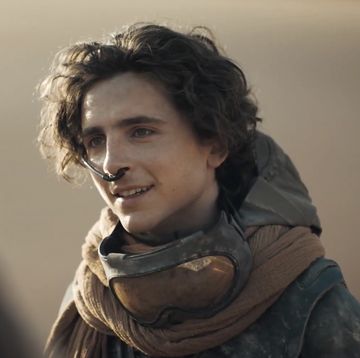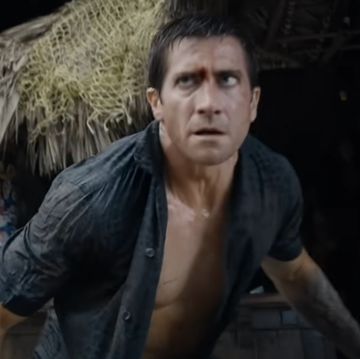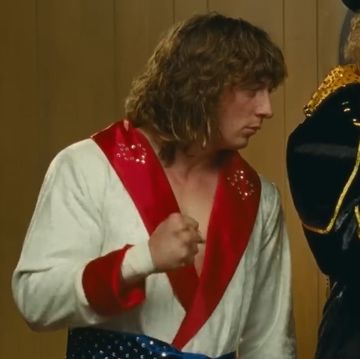In the series Hallowed Grounds, we revisit some of the greatest auteur-driven classics of modern horror history that have influenced the current crop of horror movies terrorizing audiences today.
Some horror movies offer a vision of the world that’s rooted in truth, grounding viewers in a sense of real-world familiarity, so when the shadows come to life, it’s especially frightening. Others dwell in the helter-skelter world of the unknown, blowing open the gates of hell so that the creatures of the night can flock in and barrage the senses. Tim Burton’s Beetlejuice has a wholly different approach, a conception of horror that seems to take place somewhere between the doldrums of the DMV and a horny episode of Looney Tunes.
Released in 1988 and billed as a “comedy-fantasy,” Burton’s singular polka-shuffle through all the overwrought tropes of a genre that has, traditionally, taken itself way too seriously is no doubt the work of a master auteur, and well-deserving of the prestigious “arthouse” or “art-film” mantle. But in the way that it eschews all expectations and graciously seeks to entertain audiences of all kinds—not just the stuffy arthouse film community—Beetlejuice seems above all categorization, a fearlessly original piece of work that should’ve received the accolades that other beloved, director-driven horror movies have earned over the years, such as Oscar-winning mainstays like Rosemary’s Baby or The Exorcist.
No doubt the defining moment for Burton’s then-young career, his second film (after Pee Wee’s Big Adventure) denies all convention by glossing over the boring events that lead up to a couple’s death and instead skips almost immediately to the fun part: the death itself, and then, more significantly, what happens next. Michael Keaton, in a career-defining moment for himself, embodies the now-beloved fixture of Hollywood history, the other-worldly salesman demon, a ghoulish version of the genie from Aladdin but with a constant boner, the “ghost with the most”: Beetlejuice.
Long have I fantasized about the creative process that must have gone into the making of this film. Kicking off with a menacingly off-key reverberation of Harry Belafonte music, Beetlejuice is, from the very first frame, truly something we have never seen before—and likely will never see again (unless that oft-hinted sequel ever gets off the ground). Looking at this film in the context of other champion auteur films of the genre, we’re forced to ask: What is Beetlejuice? Is it a cautionary tale about the demons who await us in the after-life? Is it a slapstick comedy, employing such legends as Catherine O’Hara and Dick fucking Cavett to show us the great farce that is life itself? Or is it a somber meditation on the temptation of suicide, starring Winona Ryder as a teenage girl who simply feels out-of-place in this hypocritical, constantly idiotic world of the living—a world that, by the celebratory ending, she realizes is more devilishly fun than worth evacuating?
Though tonally the films could not be more unalike, David Lowery’s recent A Ghost Story is like Beetlejuice in that it actually surmises to offer a similarly imaginative prediction of what happens in the after-life. Both films focus on good-natured, albeit restless spirits just looking to pass over to the other side, and Casey Affleck’s character in Lowry’s film is even draped in a long, stupid sheet, the likes of which can be seen covering Alec Baldwin and Geena Davis in a memorable sequence of Burton’s horror-rewiring-pastiche.
A Ghost Story, whether consciously or not, actually lifts quite a few thematic details from Beetlejuice, a film that welcomed audiences to the wholesome world of house-stuck ghosts almost 30 years prior. Most prominently is Lowry’s goofy, yet tender, conception of wandering spirits who are, like Baldwin and Davis’s characters, confused, stubborn, clumsy, and, at times, slapstick. And Lowry’s Ghost Story becomes most effective when it veers toward Beetlejuice, because, as Burton shows in his 1988 romp, when ghosts are silly, they provide a much-needed, almost therapeutic release from the existential dread of life.
Death, as A Ghost Story eventually realizes, after what feels like hours of aimless wandering into over-the-top sad and heartbreaking self-serious elegies, is a very weird, and at times, ridiculous concept. When Casey Affleck’s ghost character begins communicating with other dead people, and experimenting with his strange poltergeist powers, we, as the audience, are able to find some solace, and even comedy, in the crushing desolation of death—something that is going to happen to each and every one of us someday, by the way.
Beetlejuice showed us the head-spinning, bulgy-eyed, Dali-inspired depths of weirdness in which horror can descend, and though quirky films like A Ghost Story come and go, Tim Burton is in a class all his own, and there’ll only ever be one “bio-exorcist” who offers a “free demonic possession with every exorcism.”
